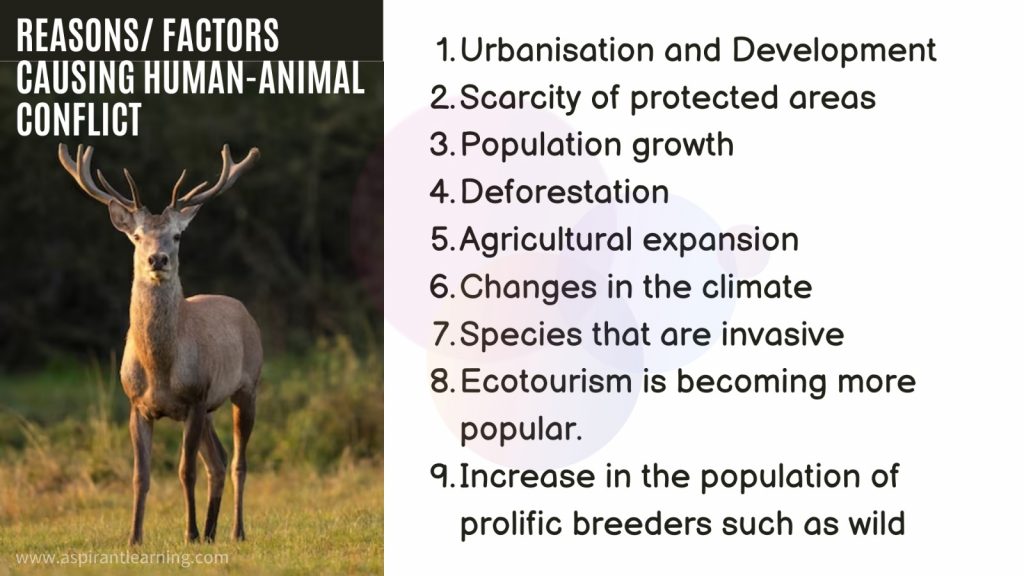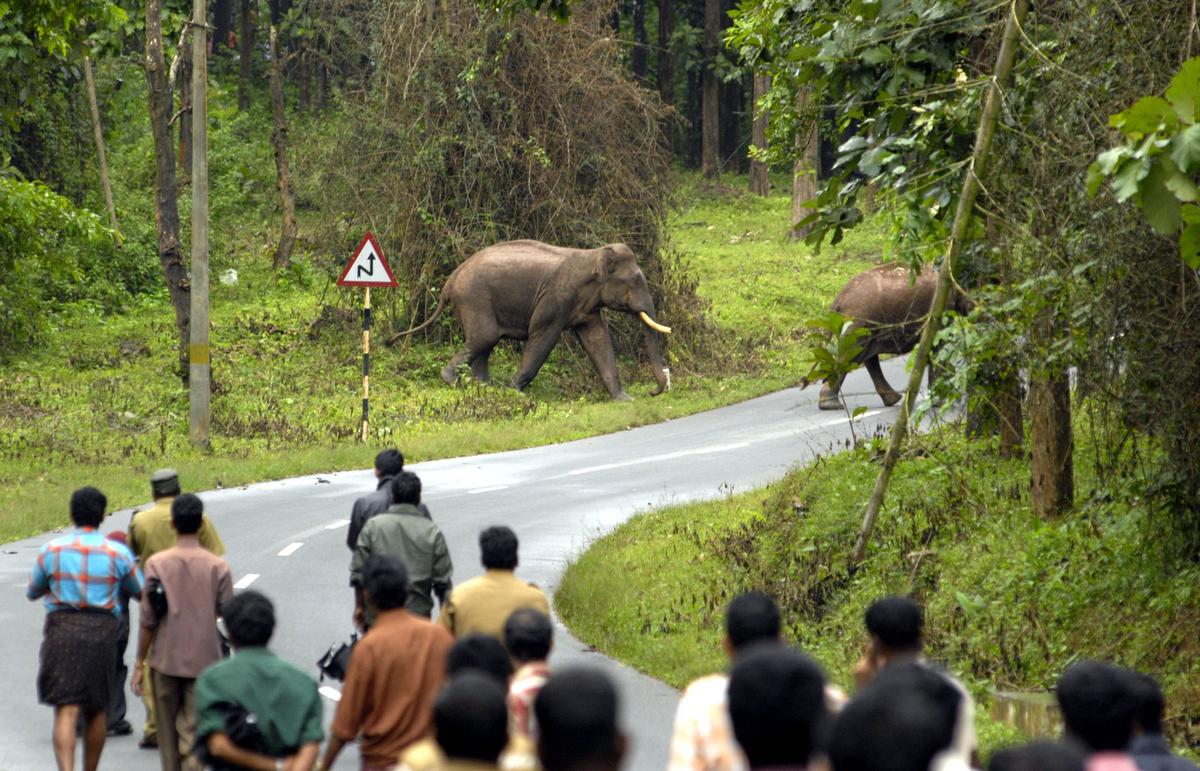News Highlight
International Conference on Human-Wildlife Conflict and Coexistence is held in Oxford, the United Kingdom.
Key Takeaway
- Human-wildlife conflicts are a serious issue to species conservation and a continuing global conference.
- It intends to address the issue by facilitating collaboration across industries and specialities.
- Conflicts between humans and wildlife make coexistence with nature difficult and impede biodiversity conservation.
- For example, according to the United Nations Environment Programme, conflict-related killing affects more than 75% of the world’s wild cat species.
- The International Conference on Human-Wildlife Conflict and Coexistence will occur in Oxford, UK, from March 30 to April 1, 2023.
- Hundreds of representatives from conservation organisations, universities, governments, companies, and indigenous peoples attended.
- In addition, local communities from six continents and 70 countries will meet to propose solutions.
Objectives of the Conference
- Promote discourse and peer-to-peer learning across sectors and actors for partnerships and collaboration among people and institutions working on human-wildlife conflict.
- Provide an interdisciplinary and collaborative understanding of the most recent discoveries, technologies, methodologies, concepts, and information on human-wildlife conflict, coexistence, and interactions.
- Human-wildlife conflict should be prioritised as one of the top global objectives in biodiversity conservation.
- The Sustainable Development Goals for the next decade create chances for collaboration on national, regional, and global policies and activities.
- Establish and design a collaborative strategy for resolving knowledge and implementation gaps to reduce and manage human-wildlife conflict.
Human-Animal Conflict
- About
- Human-animal conflict refers to circumstances in which human activity, such as;
- Agriculture
- Infrastructure development
- Resource extraction cause conflict with animals.
- People come into contact with wild animals, which has harmful consequences for both humans and animals.
- Human-animal conflict refers to circumstances in which human activity, such as;
Implications of Human-Animal Conflicts
- Economic Losses
- People, particularly farmers and livestock herders, might suffer large economic losses due to human-animal conflict.
- Wild animals can devastate crops, cause infrastructural damage, and kill cattle, causing financial hardship.
- Threats to Human Safety
- Wild animals can endanger human safety, particularly in locations where people and wildlife cohabit.
- Large predators, such as lions, tigers, and bears, can cause serious harm or death.
- Ecological Damage
- Human-animal conflict can be harmful to the environment.
- For example, when humans kill predators, prey populations increase, which can produce ecological imbalances.
- Conservation Challenges
- Human-animal conflict can also stymie conservation efforts by creating bad opinions of wildlife and making conservation measures difficult to adopt.
- Psychological Impacts
- Human-animal conflict can also psychologically affect people, particularly those who have been attacked or whose property has been damaged.
- It can cause anxiety, fear, and trauma.
Steps Taken by Government
- Project Elephant
- It was established as a Centrally Sponsored Programme by the Government of India in 1992.
- Wildlife Protection Act 1972
- It establishes the laws and regulations for animal conservation and protection in India.
- Protected Areas and Reserves
- There are 106 National Parks, 567 Wildlife Sanctuaries, and 105 existing Conservation Reserves.
- Project Tiger
- It was established by the Government of India in 1973, with 9 tiger reserves.
- There are now 53 tiger reserves in India.
- Monitoring the Illegal Killing of Elephants (MIKE)
- The Convention on International Trade in Endangered Species of Wild Fauna and Flora (CITES) was created at the tenth Conference of the Parties in 1997.
- Operation Thunderbird
- The Wildlife Crime Control Bureau (WCCB) of the Ministry of Environment, Forests, and Climate Change supervised an operation in India to combat wildlife crime.

Pic Courtesy: The Hindu
Content Source: Down to Earth



